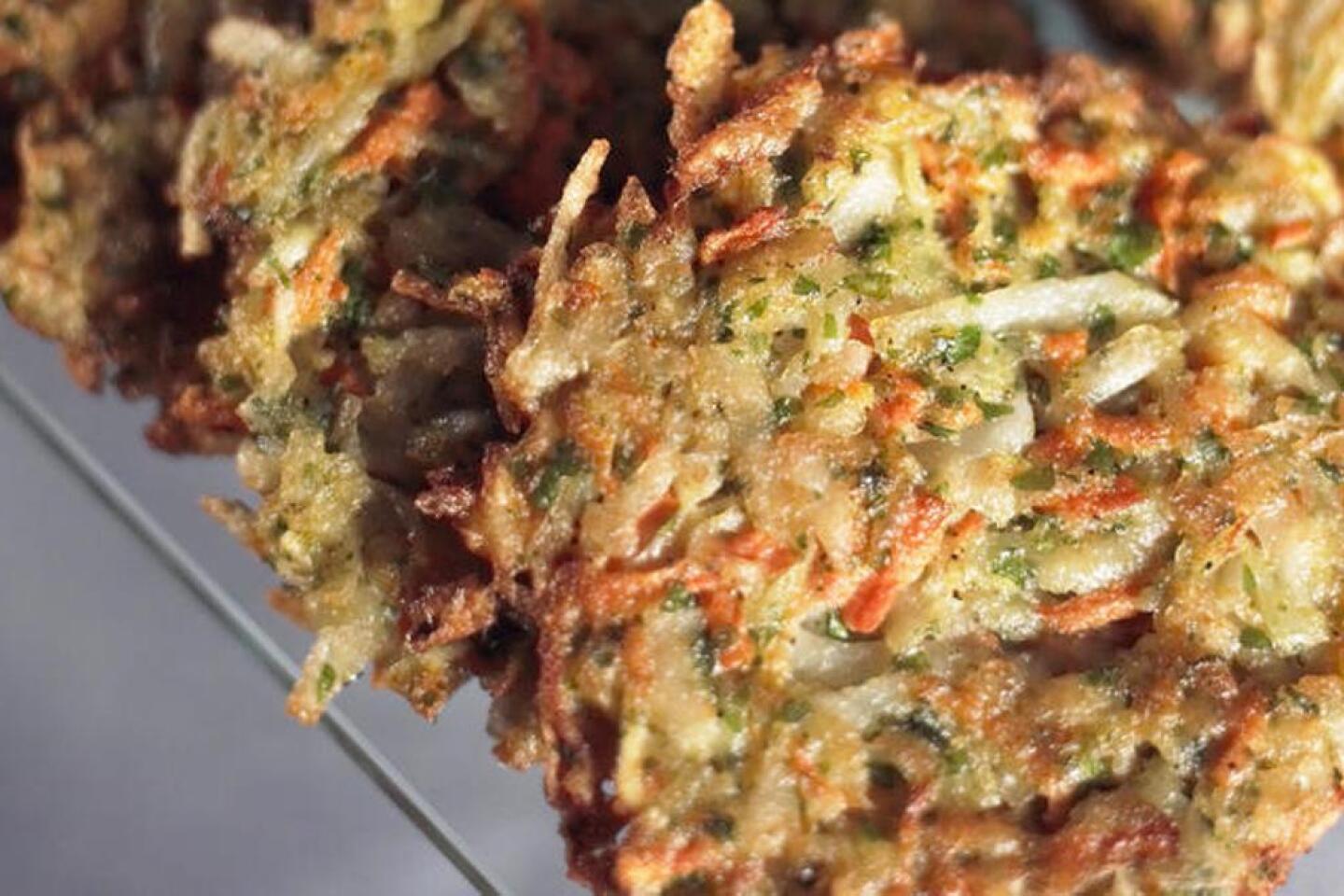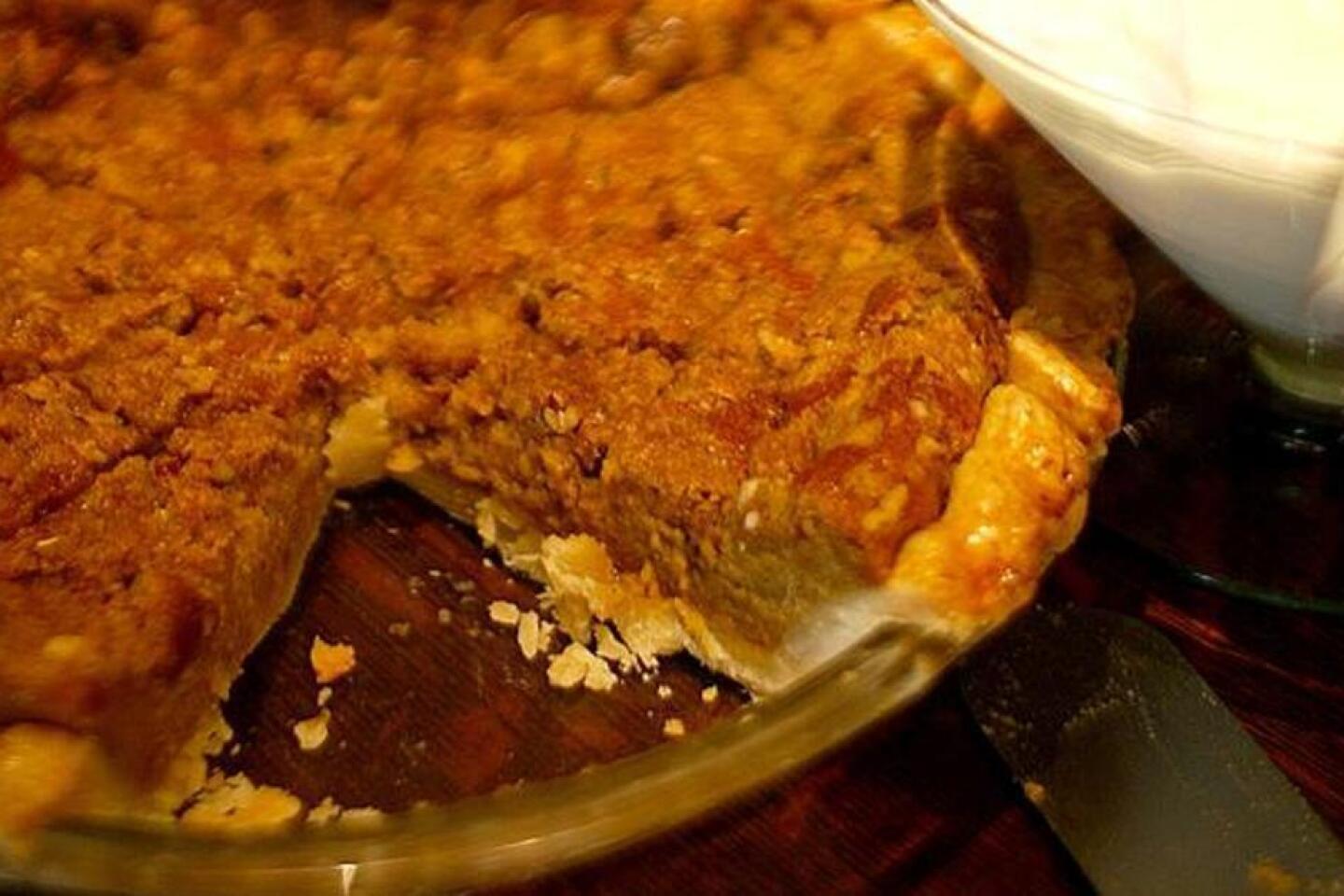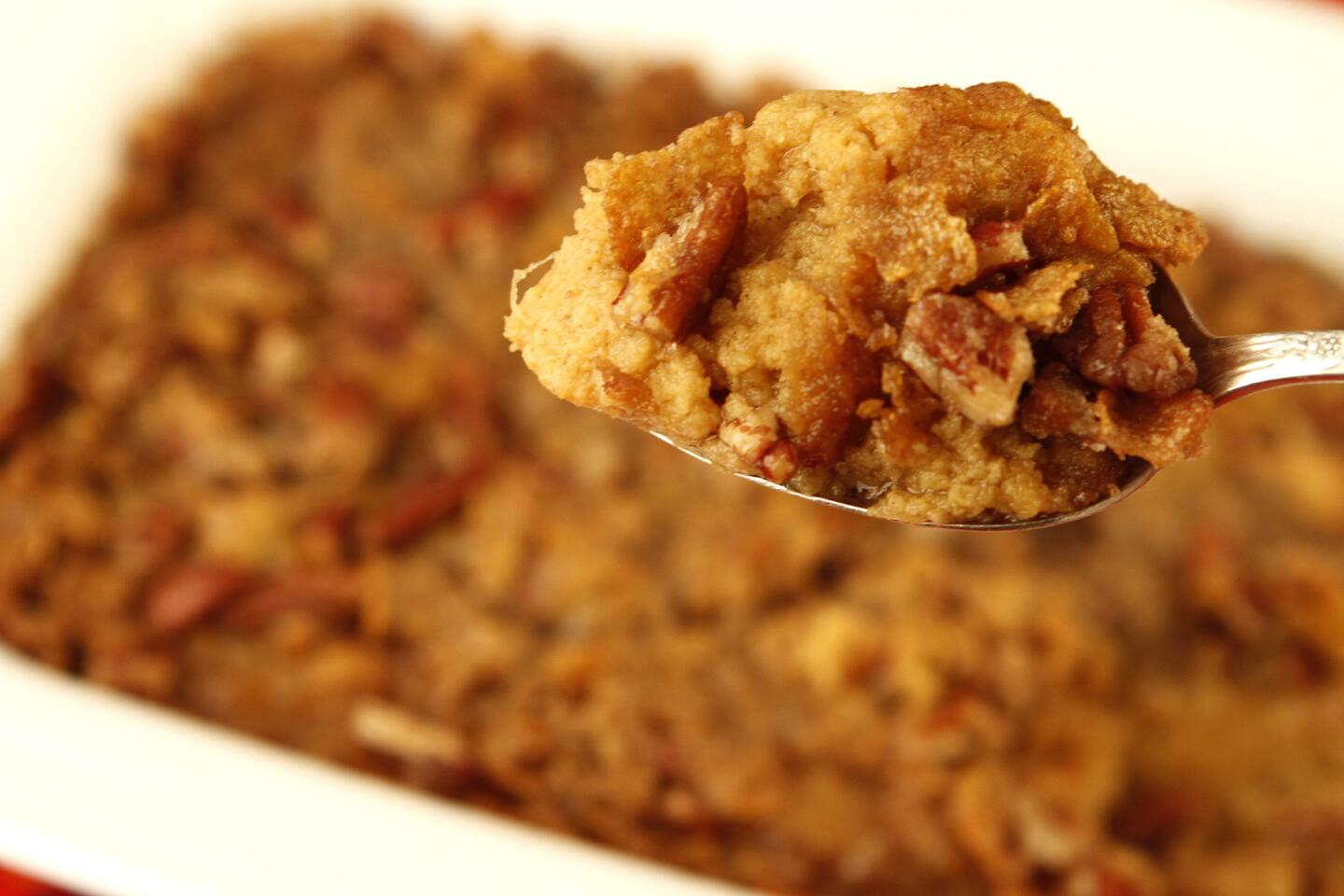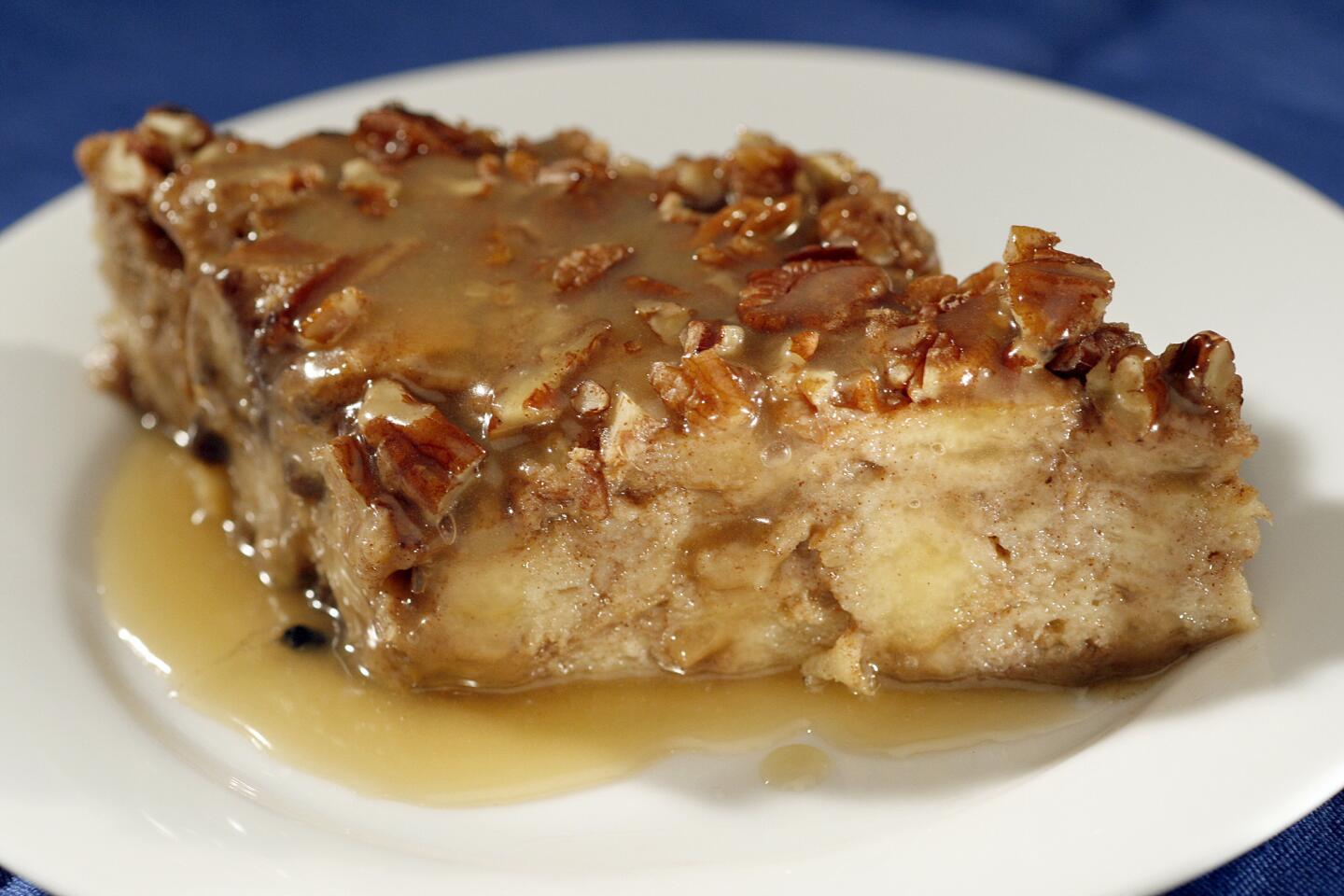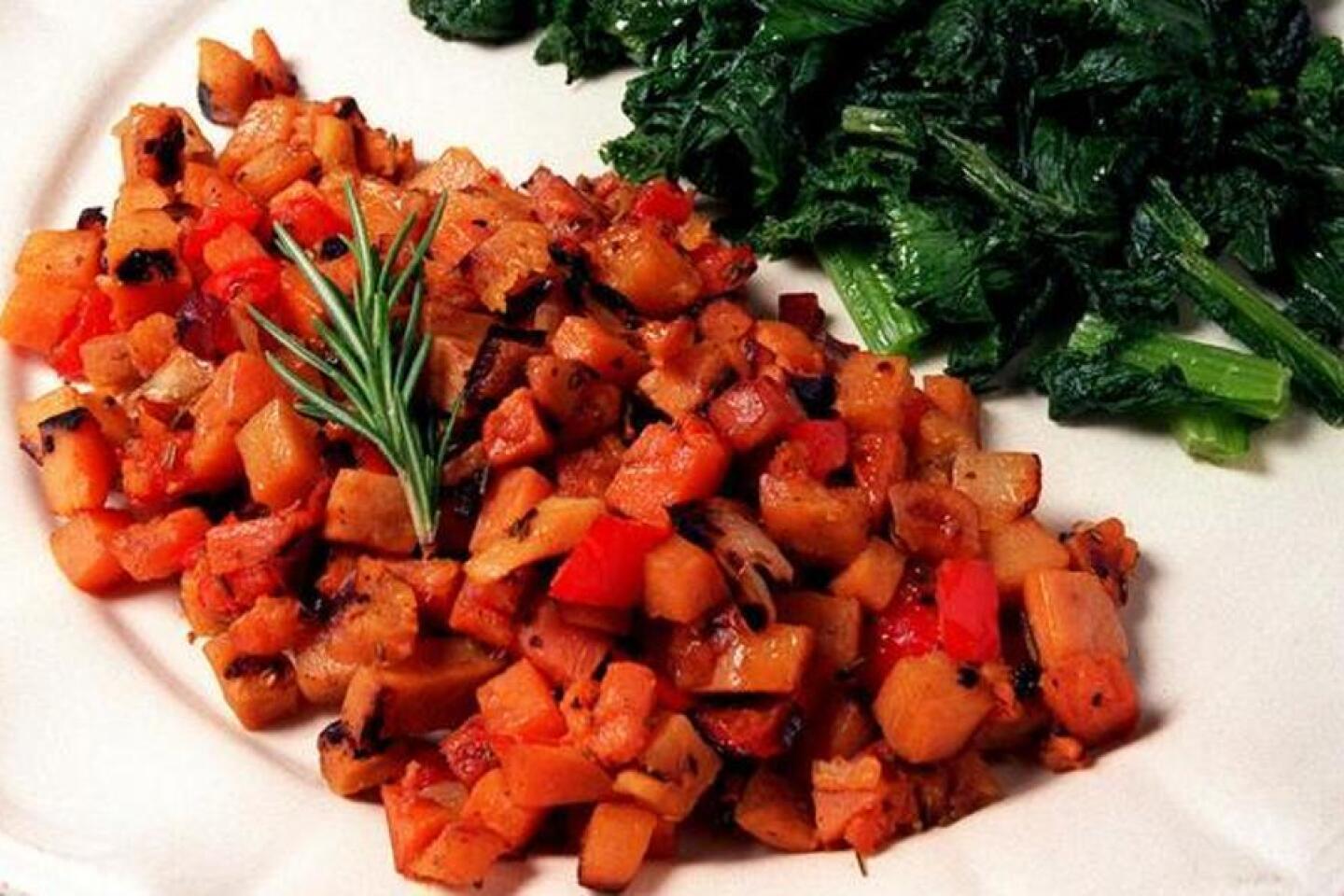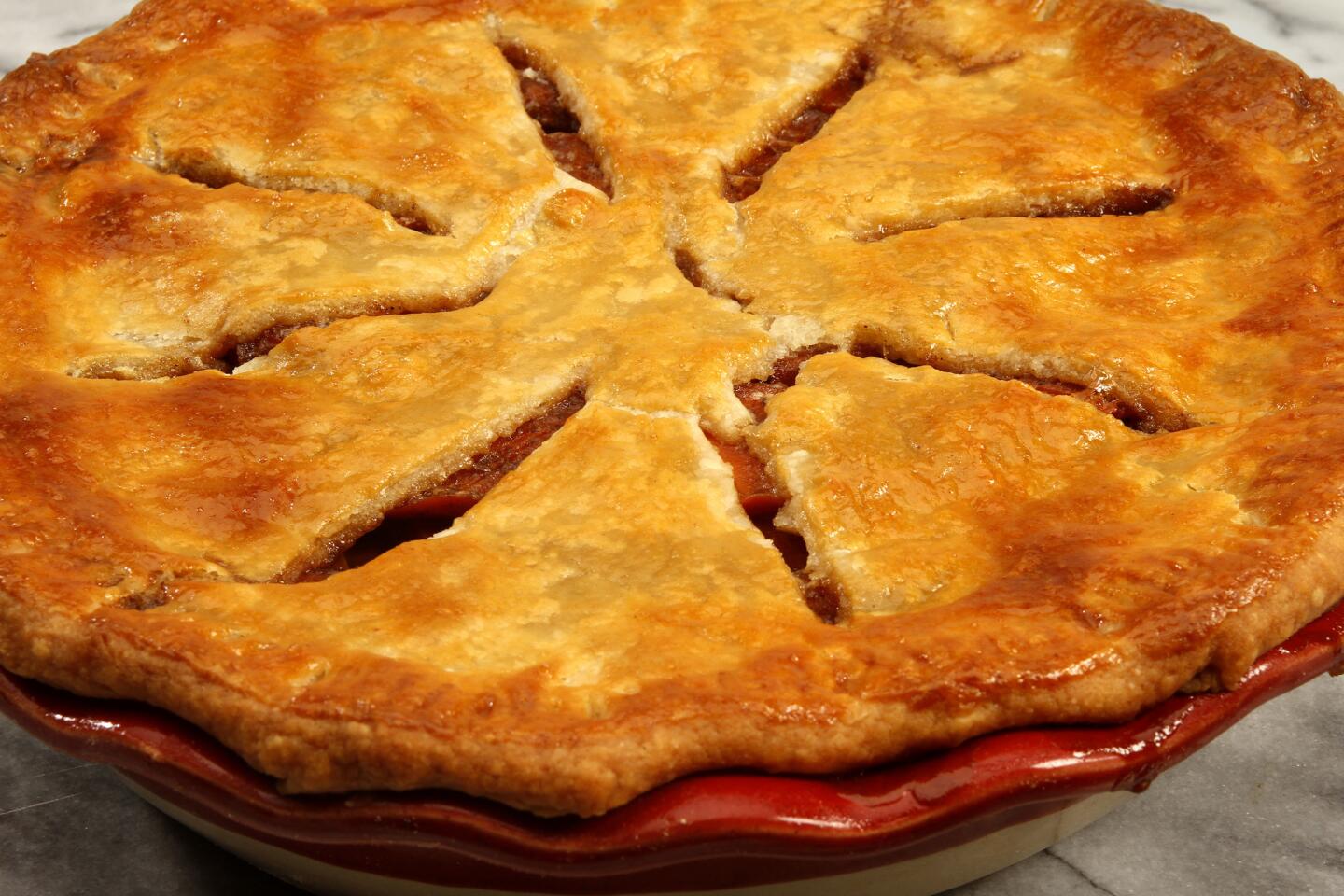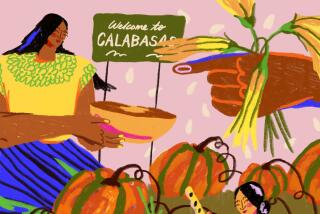Sweet potatoes versus yams, with 12 recipes
Sweet potatoes or yams? Trick question. Despite what millions of Americans (and many groceries) may call them, those dark orange, moist root vegetables that you roast in sugar syrup and top with marshmallows are not yams, just another type of sweet potato.
True yams in the United States are few and far between, unless you’re shopping in a particularly well-stocked African or Latin American market. And if you want to get even more nerdy, sweet potatoes aren’t really potatoes. True potatoes are tubers; sweet potatoes are roots (tubers are enlarged underground stems -- they sprout leaves; roots store nutrients for the plant -- they only sprout more roots).
Plant geekery aside, there are hundreds of varieties of sweet potatoes, but for the sake of cooking, we can pretty much divide them into two groups: the pale, dry-fleshed, somewhat nutty types we call sweet potatoes and the dark, moist-fleshed, more brown-sugary types we often call yams.
In addition to slight variations in flavor, the difference texture-wise is like that between baking and boiling potatoes. The drier sweet potatoes will whip better into a puree; the moist sweet potatoes will hold together after cooking.
Once a staple in the American South, the sweet potato suffered a long fall from popularity but is now making something of a comeback – in California, of all places.
More than 1 million acres of sweet potatoes were harvested in the U.S. in 1932 but only 80,000 by the 1980s. Today, the harvest is back above 100,000 acres, fueled in large part by rapidly growing plantings in California – mostly in Merced and Stanislaus counties between Fresno and Modesto.
California plantings increased 40% between 2007 and 2011 and the Golden State is now the second-leading producer of sweet potatoes in the U.S., behind only longtime leader North Carolina, and vaulting ahead of such traditional sweet potato growing areas as Louisiana, Mississippi and Georgia.
Of course, we’re still way behind the true sweet potato powerhouse. Though the root is native to the Americas, China now grows more than 80% of all of the sweet potatoes in the world.
We’re clearly going to have to work harder. Here are a dozen recipes that may inspire you to do your part.
How to buy: If you’re going to mash or puree sweet potatoes, get the ones with pale flesh. For cooking in gratins or hot dishes, use the ones with dark orange flesh. Whatever type you choose, look for sweet potatoes that are fairly regularly shaped -- they’ll cook more evenly. Avoid any with deep nicks or cuts.
How to store: Sweet potatoes are surprisingly perishable, at least when compared to regular potatoes. Keep them in a cool, dark place for a week or so. Don’t refrigerate -- they suffer chill damage, which speeds decay.
How to prepare: Is there a better light fall supper than a baked sweet potato mashed with really good butter? You can use either type (the pale ones will be creamier; the dark orange ones will be lumpy but sweet). Roast at 400 degrees until they’re easily pierced with a knife (40 to 60 minutes, depending on the size).
Are you a food geek? Follow me on Twitter @russ_parsons1
More to Read
Eat your way across L.A.
Get our weekly Tasting Notes newsletter for reviews, news and more.
You may occasionally receive promotional content from the Los Angeles Times.
